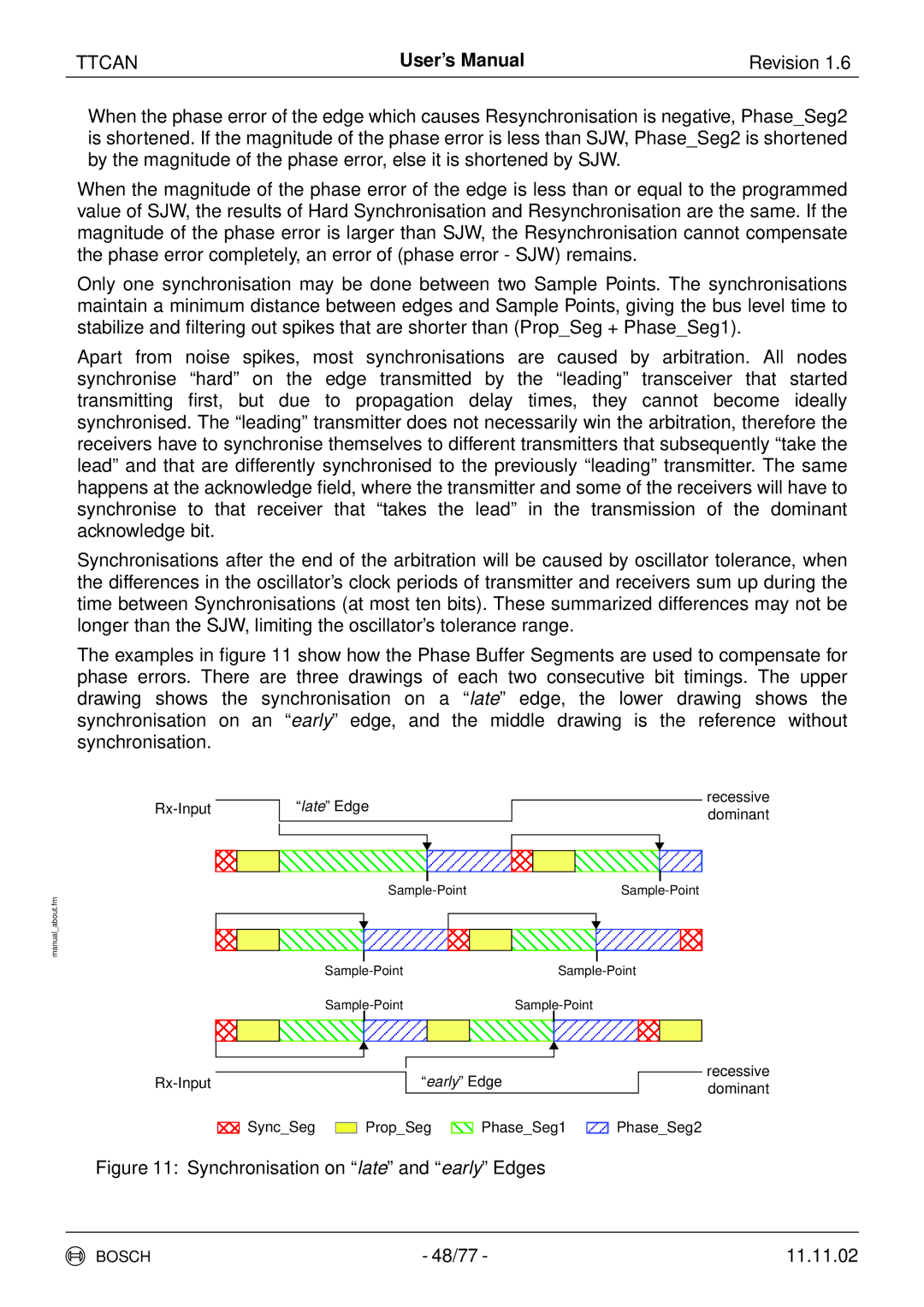
TTCAN | User’s Manual | Revision 1.6 |
When the phase error of the edge which causes Resynchronisation is negative, Phase_Seg2 is shortened. If the magnitude of the phase error is less than SJW, Phase_Seg2 is shortened by the magnitude of the phase error, else it is shortened by SJW.
When the magnitude of the phase error of the edge is less than or equal to the programmed value of SJW, the results of Hard Synchronisation and Resynchronisation are the same. If the magnitude of the phase error is larger than SJW, the Resynchronisation cannot compensate the phase error completely, an error of (phase error - SJW) remains.
Only one synchronisation may be done between two Sample Points. The synchronisations maintain a minimum distance between edges and Sample Points, giving the bus level time to stabilize and filtering out spikes that are shorter than (Prop_Seg + Phase_Seg1).
Apart from noise spikes, most synchronisations are caused by arbitration. All nodes synchronise “hard” on the edge transmitted by the “leading” transceiver that started transmitting first, but due to propagation delay times, they cannot become ideally synchronised. The “leading” transmitter does not necessarily win the arbitration, therefore the receivers have to synchronise themselves to different transmitters that subsequently “take the lead” and that are differently synchronised to the previously “leading” transmitter. The same happens at the acknowledge field, where the transmitter and some of the receivers will have to synchronise to that receiver that “takes the lead” in the transmission of the dominant acknowledge bit.
Synchronisations after the end of the arbitration will be caused by oscillator tolerance, when the differences in the oscillator’s clock periods of transmitter and receivers sum up during the time between Synchronisations (at most ten bits). These summarized differences may not be longer than the SJW, limiting the oscillator’s tolerance range.
The examples in figure 11 show how the Phase Buffer Segments are used to compensate for phase errors. There are three drawings of each two consecutive bit timings. The upper drawing shows the synchronisation on a “late” edge, the lower drawing shows the synchronisation on an “early” edge, and the middle drawing is the reference without synchronisation.
|
| “late” Edge |
|
| ||
|
|
|
|
|
|
|
|
|
|
|
|
|
|
|
|
|
|
|
|
|
|
|
|
|
|
|
|
|
|
|
|
|
|
|
manual_about.fm
recessive dominant
“early” Edge
recessive dominant
Sync_Seg
Prop_Seg
Phase_Seg1
Phase_Seg2
Figure 11: Synchronisation on “late” and “early” Edges
BOSCH | - 48/77 - | 11.11.02 |
